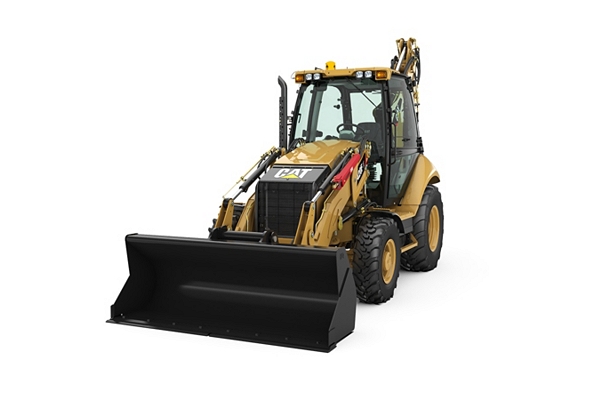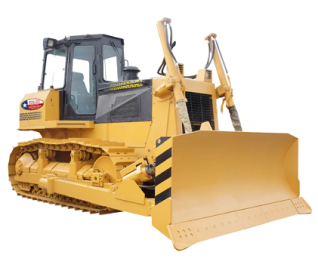Discovering the Financial Advantages of Leasing Building And Construction Devices Contrasted to Having It Long-Term
The choice between having and leasing building devices is essential for monetary administration in the market. Renting deals immediate price savings and operational adaptability, allowing business to allot resources a lot more effectively. Comprehending these nuances is crucial, specifically when thinking about how they align with details job needs and monetary techniques.

Expense Comparison: Renting Out Vs. Possessing
When reviewing the economic ramifications of owning versus renting building and construction devices, a complete expense comparison is essential for making educated choices. The option between renting and possessing can considerably impact a firm's lower line, and comprehending the associated prices is critical.
Renting building and construction tools commonly involves reduced ahead of time costs, permitting businesses to designate resources to other operational demands. Rental costs can collect over time, possibly surpassing the expenditure of ownership if tools is needed for an extensive duration.
Conversely, having building and construction tools requires a considerable preliminary financial investment, together with recurring prices such as financing, depreciation, and insurance coverage. While possession can bring about long-term cost savings, it likewise locks up resources and might not offer the exact same level of versatility as renting. Furthermore, having equipment necessitates a commitment to its usage, which might not always align with task needs.
Inevitably, the choice to have or lease must be based upon a thorough evaluation of details task demands, monetary capability, and long-lasting strategic goals.
.png)
Maintenance Costs and Duties
The option between owning and renting construction equipment not only involves financial factors to consider but also encompasses recurring upkeep expenditures and duties. Having devices needs a considerable commitment to its upkeep, that includes regular inspections, repairs, and possible upgrades. These duties can swiftly gather, leading to unexpected prices that can stress a spending plan.
On the other hand, when leasing equipment, maintenance is generally the responsibility of the rental firm. This setup enables specialists to avoid the economic worry related to wear and tear, as well as the logistical obstacles of organizing repair services. Rental agreements usually include provisions for upkeep, implying that service providers can concentrate on completing tasks as opposed to bothering with tools condition.
In addition, the diverse series of equipment available for lease enables business to choose the most recent models with sophisticated technology, which can improve efficiency and efficiency - scissor lift rental in Tuscaloosa, AL. By choosing leasings, services can stay clear of the long-lasting liability of equipment devaluation and the associated upkeep headaches. Eventually, assessing upkeep expenses and obligations is essential for making a notified choice concerning whether to rent or have building and construction tools, significantly influencing general task prices and functional efficiency

Depreciation Impact on Possession

A substantial aspect to consider in the decision to possess building and construction tools is the impact of depreciation on total ownership expenses. Depreciation stands for the decrease in value of the equipment gradually, affected by variables such as usage, wear and tear, and improvements in modern technology. As equipment ages, its market worth lessens, which can significantly impact the owner's monetary setting when it comes time to market or trade the tools.
For construction firms, this devaluation can equate to substantial losses if the equipment is not made use of to its maximum capacity or if it becomes obsolete. Proprietors must account for devaluation in their monetary projections, which can bring about higher overall prices compared to leasing. Additionally, the tax obligation ramifications of depreciation can be complicated; while it may provide some tax obligation benefits, these are typically more tips here offset by the fact of decreased resale worth.
Eventually, the burden of devaluation highlights the value of understanding the long-term economic commitment entailed in having construction tools. Business have to thoroughly review how typically they will certainly use the devices and the potential monetary influence of devaluation to make an educated choice concerning possession versus renting.
Monetary Flexibility of Leasing
Renting out building tools provides substantial financial versatility, permitting business to allot resources more effectively. This flexibility is specifically essential in a sector characterized by changing task demands and varying workloads. By choosing to rent out, organizations can prevent the substantial capital outlay needed for buying tools, preserving capital for other operational needs.
In addition, leasing equipment allows firms to tailor their equipment choices to certain project demands without the lasting dedication related to ownership. This means that services can conveniently scale their devices supply up or down based upon existing and anticipated job requirements. Subsequently, this flexibility minimizes the threat of over-investment in equipment that may end up being underutilized or outdated with time.
An additional financial advantage of renting is the capacity for tax obligation advantages. Rental repayments are typically thought about general expenses, enabling for immediate tax obligation reductions, unlike depreciation on owned and operated tools, which is topped several years. scissor lift rental in Tuscaloosa, AL. This immediate expenditure recognition can even more improve a firm's money position
Long-Term Task Factors To Consider
When reviewing the lasting requirements of a construction organization, the decision between owning and renting out devices becomes extra complicated. Key factors to take into consideration consist of project period, frequency of use, and the nature of upcoming jobs. For projects with extensive timelines, buying equipment might seem useful because of the potential for reduced general prices. Nevertheless, if the tools will not be made use of constantly across jobs, possessing may result in underutilization and unnecessary expense on insurance, upkeep, and storage space.
The building market is progressing swiftly, with brand-new equipment offering boosted effectiveness and safety and security attributes. This flexibility is specifically valuable for organizations that handle varied projects requiring different kinds of devices.
Moreover, monetary stability plays a vital role. Possessing devices typically entails substantial funding investment and depreciation concerns, while renting out enables more foreseeable budgeting and capital. Eventually, the choice in between leasing and owning ought to be aligned with the tactical objectives of the building and construction company, taking into consideration both existing and awaited job demands.
Conclusion
In final thought, renting out building devices supplies substantial monetary benefits over long-term ownership. Eventually, the choice to rent rather than own aligns with the vibrant nature of building tasks, allowing for versatility and access to the most current devices without the economic burdens associated with ownership.
As devices ages, its market value reduces, which can considerably impact the owner's financial position when it comes time to trade the tools or sell.
Renting construction equipment provides significant monetary versatility, permitting firms to assign sources a lot more successfully.Furthermore, renting equipment enables business to customize their equipment selections to details task needs without the lasting dedication connected with ownership.In final thought, renting construction tools supplies significant monetary benefits over long-lasting ownership. Inevitably, the choice to rent out instead than linked here very own aligns with the vibrant nature of building and construction tasks, enabling for adaptability best site and accessibility to the latest tools without the economic problems connected with ownership.